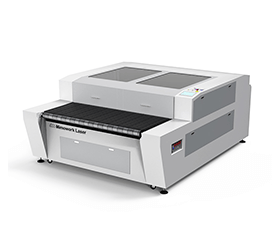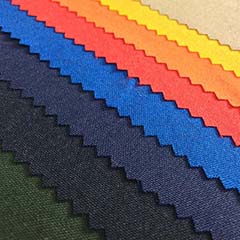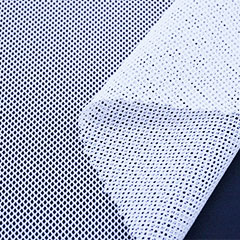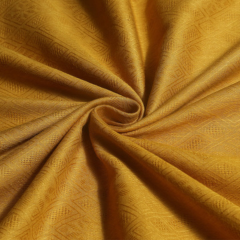Ventile Fabric Guide
Introduction of Ventile Fabric
Ventile fabric is a legendary ventilated fabric known for its unique combination of breathability and weather resistance. Unlike traditional waterproof materials that rely on synthetic coatings, Ventile fabric uses a tightly woven, long-staple cotton construction that naturally swells when wet, creating a water-repellent barrier while remaining highly ventilated in dry conditions.
Originally developed for military pilots and extreme outdoor use, Ventile fabric excels in demanding environments by offering windproof, durable, and highly breathable performance. Its ventilated structure ensures comfort during high-exertion activities, making it a favorite among adventurers and heritage apparel brands. Whether for jackets, gloves, or expedition gear, Ventile fabric remains unmatched as a sustainable, high-performance ventilated fabric that adapts to changing conditions without compromising on comfort.
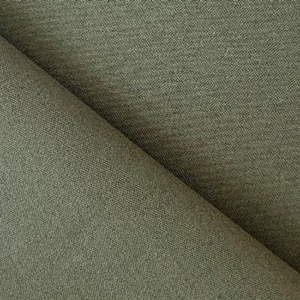
Ventile Fabric
Introduction of Ventile Fabric
▶ Features
Natural Cotton Construction
Woven from extra-long staple cotton with 2x tighter weave density (220+ threads/inch) than conventional canvas.
Self-Regulating Water Resistance
Cotton fibers swell when wet to block water penetration (>2000mm hydrostatic head), reverting to breathable state when dry.
Dynamic Breathability
Maintains RET <12 (superior to most 3-layer membranes) through microscopic air channels in dry conditions.
Exceptional Durability
Withstands 50+ industrial washes while retaining waterproofness; 3x higher tear strength than standard cotton twill.
Thermoregulation
Natural fiber properties provide thermal buffering across -30°C to +40°C operational range.
▶ Advantages
Eco-Certified Performance
100% biodegradable, PFAS/PFC-free, and OEKO-TEX® Standard 100 certified.
All-Weather Versatility
Single-layer solution eliminates the waterproof/breathable paradox of laminated fabrics.
Silent Operation
No plastic membrane noise, maintaining natural fabric drape and acoustic stealth.
Proven Heritage
80+ years of field validation by RAF pilots, Antarctic expeditions, and premium outdoor brands (e.g. Barbour, Snow Peak).
Lifecycle Economy
Higher initial cost offset by 10-15 year service life in professional use cases.
Types of Ventile Fabric
VENTILE® Classic
Original tightly woven 100% cotton
Natural waterproofing through fiber swelling
Ideal for heritage outerwear and casual wear
VENTILE® L34
Enhanced performance version
Higher thread count for improved waterproofing
Used in technical outdoor gear and workwear
VENTILE® L27
Lighter weight option (270g/m² vs Classic's 340g/m²)
Maintains water resistance with better packability
Popular for shirts and lightweight jackets
VENTILE® Specialty Blends
Cotton/nylon blends for increased durability
Stretch variants with elastane for mobility
Fire-resistant treatments for industrial use
VENTILE® Military Grade
Ultra-dense weave (5000mm waterproof rating)
Meets strict military specifications
Used by armed forces and expedition teams
Why Choose Ventile® Fabric?
Natural Waterproofing
Tightly woven cotton swells when wet, creating a waterproof barrier without synthetic coatings.
Superior Breathability
Maintains excellent airflow (RET<12), outperforming most waterproof membranes.
Extreme Durability
3x stronger than regular cotton, withstands harsh conditions and frequent washing.
All-Weather Performance
Works in temperatures from -30°C to +40°C, windproof and UV-resistant.
Eco-Friendly Choice
100% biodegradable, PFAS/PFC-free, with a longer lifespan than synthetics.
Professional Proven
Trusted by military, explorers and premium outdoor brands for over 80 years.
Ventile Fabric vs Other Fabrics
| Feature | Ventile® | Gore-Tex® | Standard Waterproof Fabrics | Softshell Fabrics |
|---|---|---|---|---|
| Material | 100% woven long-staple cotton | PTFE membrane + synthetics | Polyester/Nylon + coating | Polyester/elastane blends |
| Waterproofing | Self-sealing when wet (2000-5000mm) | Extreme (28,000mm+) | Coating-dependent | Water-resistant only |
| Breathability | Excellent (RET<12) | Good (RET6-13) | Poor | Excellent (RET4-9) |
| Windproof | 100% | 100% | Partial | Partial |
| Eco-Friendliness | Biodegradable | Contains fluoropolymers | Microplastic pollution | Synthetic materials |
| Weight | Medium (270-340g/m²) | Lightweight | Lightweight | Lightweight |
| Best For | Premium outdoor/eco-apparel | Extreme weather | Everyday rainwear | Casual activities |
Denim Laser Cutting Guide | How to Cut Fabric with a Laser Cutter
In this video, we can see that different laser cutting fabrics require different laser cutting powers and learn how to choose laser power for your material to achieve clean cuts and avoid scorch marks.
Guide to the Best Laser Power for Cutting Fabrics
How to laser cut fabric? Come to the video to learn the laser cutting guide for denim and jeans. So fast and flexible whether for customized design or mass production it is with the help of fabric laser cutter. Polyester and denim fabric are good for laser cutting, and what else?
Recommended Fabric Laser Cutting Machine
Typical Applications of Laser Cutting of Ventile Fabrics
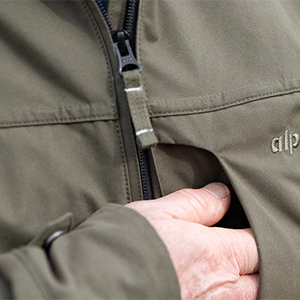
Precision Outdoor Gear
Waterproof jacket panels
Glove components
Expedition tent segments
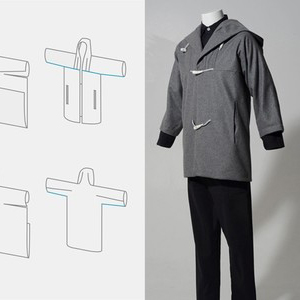
Technical Apparel
Seamless venting patterns
Minimal-waste pattern cutting
Custom perforations for breathability
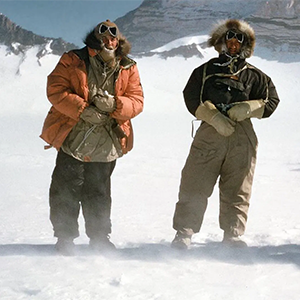
Aerospace/Military
Silent-operation uniform parts
High-tension reinforcement pieces
Flame-resistant gear sections

Medical/Protective Equipment
Sterile barrier fabric components
Reusable PPE with sealed edges
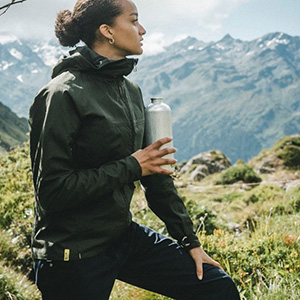
Designer Fashion
Intricate heritage-style detailing
Zero-fray edge finishes
Signature ventilation cutouts
Laser Cut Ventile Fabric: Process & Advantages
Laser cutting is a precision technology increasingly used for boucle fabric, offering clean edges and intricate designs without fraying. Here’s how it works and why it’s ideal for textured materials like boucle.
① Preparation
Fabric is flattened and stabilized on the laser bed to avoid uneven cuts.
A digital design (e.g., geometric patterns, floral motifs) is uploaded to the laser machine.
② Cutting
A high-power CO2 laser vaporizes fibers along the design path.
The laser seals edges simultaneously, preventing fraying (unlike traditional cutting).
③ Finishing
Minimal cleanup needed—edges are naturally fused.
Optional: Light brushing to remove minimal residue.
FAQS
Ventile fabric is a high-performance, tightly woven cotton material originally developed in the 1940s by British scientists for military use, particularly for pilots flying over cold waters. It is known for its exceptional weather resistance while remaining breathable.
Ventile fabric is highly water-resistant but not fully waterproof in the traditional sense (like a rubberized or PU-coated rain jacket). Its performance depends on the weave density and whether it has additional treatments.
Ventile is a premium, tightly woven cotton fabric renowned for its exceptional weather resistance, breathability, and durability. Originally developed in the 1940s for British Royal Air Force (RAF) pilots, it was designed to protect downed aircrew from hypothermia in cold waters. Unlike modern synthetic waterproof membranes (e.g., Gore-Tex), Ventile relies on its unique weave structure rather than chemical coatings for protection.
1. Rubberized / PVC-Coated Fabrics
Examples:
Rubber (e.g., Mackintosh raincoats)
PVC (e.g., industrial rainwear, fishing gear)
Features:
Fully waterproof (no breathability)
Heavy, stiff, and can trap sweat
Used in rain slickers, waders, drysuits
2. PU (Polyurethane) Laminate
Examples:
Cheap rain jackets, backpack covers
Features:
Waterproof but can degrade over time (peeling, cracking)
Non-breathable unless microporous
3. Waterproof Breathable Membranes (Best for Active Use)
These fabrics use laminated membranes with microscopic pores that block liquid water but allow vapor to escape.
Caring for Ventile fabric properly ensures its longevity, water resistance, and breathability. Since Ventile is a tightly woven cotton fabric, its performance depends on maintaining the integrity of its fibers and, if treated, its water-repellent coatings.
- Cleaning
- Hand wash or machine wash (gentle cycle) in cold water. Avoid bleach and fabric softeners.
- Drying
- Air dry in shade; avoid direct sunlight or tumble drying.
- Restoring Water Repellency
- Waxed Ventile: Apply specialty wax (e.g., Greenland Wax) after cleaning, then melt evenly with a hairdryer.
- DWR-treated Ventile: Use waterproofing spray (e.g., Nikwax) and tumble dry on low heat to reactivate.
- Storage
- Store clean and fully dry in a ventilated area. Hang to maintain shape.
- Repairs
- Mend small tears with fabric patches or stitching.
WeatherWise Wear Ventile is high-performance outerwear crafted from tightly woven organic cotton that naturally resists wind and light rain while remaining highly breathable. Unlike synthetic waterproof fabrics, Ventile's unique weave swells when wet to block moisture, and when waxed or DWR-treated, it becomes stormproof. Perfect for outdoor adventures and harsh climates, this durable, eco-friendly fabric develops a beautiful patina over time and requires minimal care - just occasional waxing or waterproofing treatments. Brands like Fjällräven and Private White V.C. use Ventile in their premium jackets, offering exceptional weather protection without compromising comfort or sustainability. Ideal for explorers who value natural materials that last decades.



